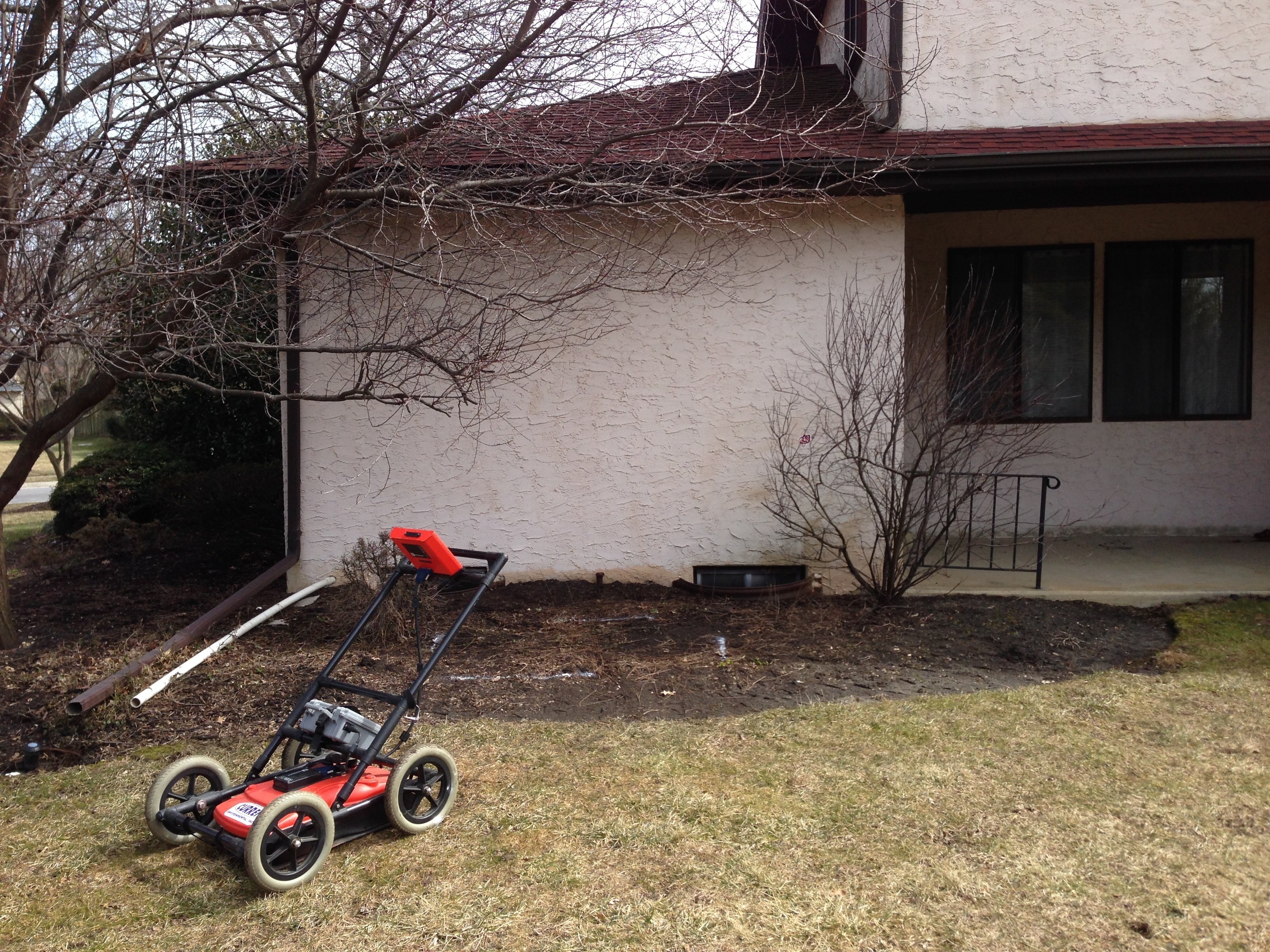Oil Tank Property Inspections
(locating underground tanks)
When questions arise regarding did a house ever have oil heat, a professional inspection of the property can be necessary. Depending on the age of a home, oil heat may have been utilized. Many homes first started on coal and then progressed to oil and then to natural gas. Finding tanks is not always easy, but professionals can look for tell tale signs that a tank was or is present. Walking inspections of a property can be combined, with metal detector sweeps and Ground Penetrating Radar (GPR) surveys can be performed to locate BOTH buried tanks as well as excavations where tanks were once located.
Buying or selling a home with a buried oil tank raises concerns on both sides of the table. Full disclosure and investigation of an oil tank is necessary to ensure that it is known that a tank is present or if the tank has not leaked.

How do I know if an oil tank is buried on the property I am buying (or selling)?
Call Curren Environmental, Inc. we utilizes a 20 point inspection process to determine if a tank is present. Our inspections involves both on site and off site research and is the most thorough in the industry.
What if I a buy a property and THEN find a buried tank? Who pays for the tank problem?
Unfortunately, you bought the property and the tank. Buyer beware has never been more important then when purchasing a home with a potential buried oil tank.
What if there are no visible signs that a tank was present, can you use electronic or x ray (x-ray) methods to locate a tank?
Metal detector attempted scans are common because they are low cost, but highly inaccurate as a metal detector is nondiscriminatory and will detect metal above and below ground regardless of the metal being a tank or not. Curren marked the tank below in orange at each end. A metal detector would miss this tank because metal railing runs next to the tank. The metal detector would beep all over this area and stop beeping where the railing and tank end, completely missing the tank.

Ground Penetrating Radar (GPR) is the more accurate technology to utilize. GPR sends a radar signal into the ground will get signal feedback via a image on the GPR screen of a buried anomaly which can be buried tanks, pipes and sometimes former tank excavations can be located as the radar signal will reflect off these images in different ways.

Ask the Experts
888-301-1050

Ground Penetrating Radar (GPR) provides real time images of buried objects and has been used for commercial purposes for years. It is more expensive than a metal detector although price alone does not make it better, you get what you pay for and GPR costs more and gives you more.
Every GPR tank scan Curren performs also uses a metal detector to very buried anomalies, we simply would not rely 100% on a metal detector to find a tank.
Metal detectors are inexpensive ($800 to $1,500) and will give false readings from both underground and aboveground metal site features, such as fences, ac units, rebar and wire mesh in concrete.
We are often called to scan a property after a metal detector survey was completed and found to be inconclusive. Unfortunately these clients end up paying twice because they bought a service on price not effectiveness. Our surveys include BOTH GPR and METAL DETECTOR SURVEYS. Bottom line we use a lot of expensive equipment to compete a tank scan and our 20 plus years of tank removal experience gives us the expertise a guy working out of his house with an $800.00 metal detector can't match.

Is a GPR scan worth the extra cost?
The answer is always yes. At Curren we bring the GPR unit and a few metal detectors so you can verify the buried anomaly is a Metalica object. We just can't rely on a metal detecting finding a tank by itself.
Curren technicians utilize can use up to three separate technologies to scan for tanks (GPR, Radio Frequency (RF for tracing pipes) and magnetometer), the most thorough in the industry. Each tool helps fill in data gaps that you have when only using a single technology such as a metal detector. Using radar technology (GPR), actual subsurface objects can be mapped out.
You are also paying for what you get, metals detectors can be purchased for under $1,000.00, Curren's approach utilizes equipment costing tens of thousands of dollars. Our approach is a commercial standard, priced for the consumer. And we remove tanks, so we want to find the tank and will supply a cost to remove the tank with our tank sweep report.
We found the tank on the left inside a house & the one on the left under steps.


-
 This photo shows an area that has no visual indication that an oil tank is present
This photo shows an area that has no visual indication that an oil tank is present -
 Curren uses GPR, RF Technologies and three (3) different metal detectors to provide a thorough evaluation. This photo shows a tile probe detector. It has the ability to probe into the ground and when it touches metal a signal activiated.
Curren uses GPR, RF Technologies and three (3) different metal detectors to provide a thorough evaluation. This photo shows a tile probe detector. It has the ability to probe into the ground and when it touches metal a signal activiated. -
 Indicator confirms a buried metal object.
Indicator confirms a buried metal object. -
 The outline is a tank Curren found with GPR.
The outline is a tank Curren found with GPR. -

-
 This was the hidden tank after excavation and cleaning in place.
This was the hidden tank after excavation and cleaning in place.


